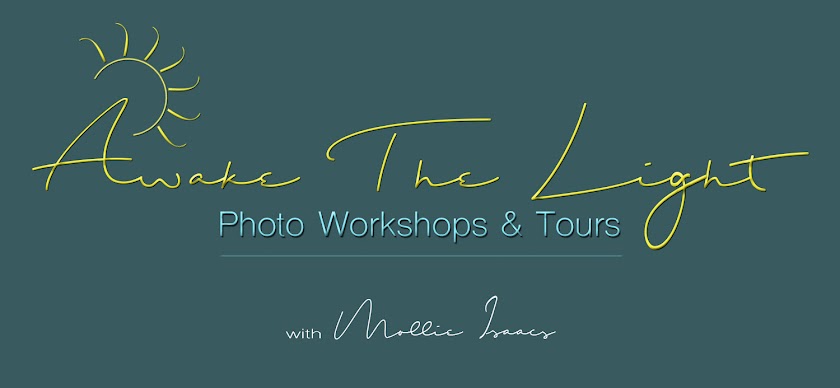Bighorn sheep are beautiful subjects. We usually see several different species in the mountains of the American west and Alaska. But there are also Desert Bighorns like this guy.
I usually do not photograph captive animals, and prefer to find them in the wild. But this handsome guy was a resident of the Arizona Sonora Desert Museum in Tucson, and was too appealing to pass by. The Desert Museum does a good job of creating large and realistic-looking enclosures for large animals. All the rocks you see are man-made, but they look like the real thing.
This image was cropped and optimized in Lightroom. It took less than 5 minutes to tweak the original RAW image, shown here, to create the final version above.
 |
| BEFORE |
The ram was deep inside the enclosure, behind a rock wall, with no direct light falling on him. So as always, Lightroom came to the rescue.
After cropping the image, I used the following Lightroom controls:
1. Move the Whites slider to brighten the horns and fur.
2. Move the Blacks slider to deepen the blacks slightly.
3. Increase Clarity to +30 for more mid-tone contrast.
4. Move Luminance slider to +30 to reduce noise.
5. Use the Graduated Filter to significantly reduce the brightness of the bottom rock.
6. Use the Brush Tool to lighten the eye.
That's it. Quick and easy.
Many people despair when they download their images and see something like the BEFORE image. They think they have done something wrong, and often delete the image. But Lightroom can bring out incredible details in most images with just a little bit of time and thought.
So go back through your old image files and see what you can find to work on in Lightroom (or Photoshop or Elements which work similarly). You will be surprised at how easily you can bring images back to life with just a little digital help!
TECH SPECS
1/800 sec., f/9, ISO 400. Canon 70-200mm f/4L IS lens set at 200mm on Canon 7D Mark II body. Handheld.
TODAY'S QUOTE: "Look deep into nature, and then you will understand everything better." --
Albert Einstein








